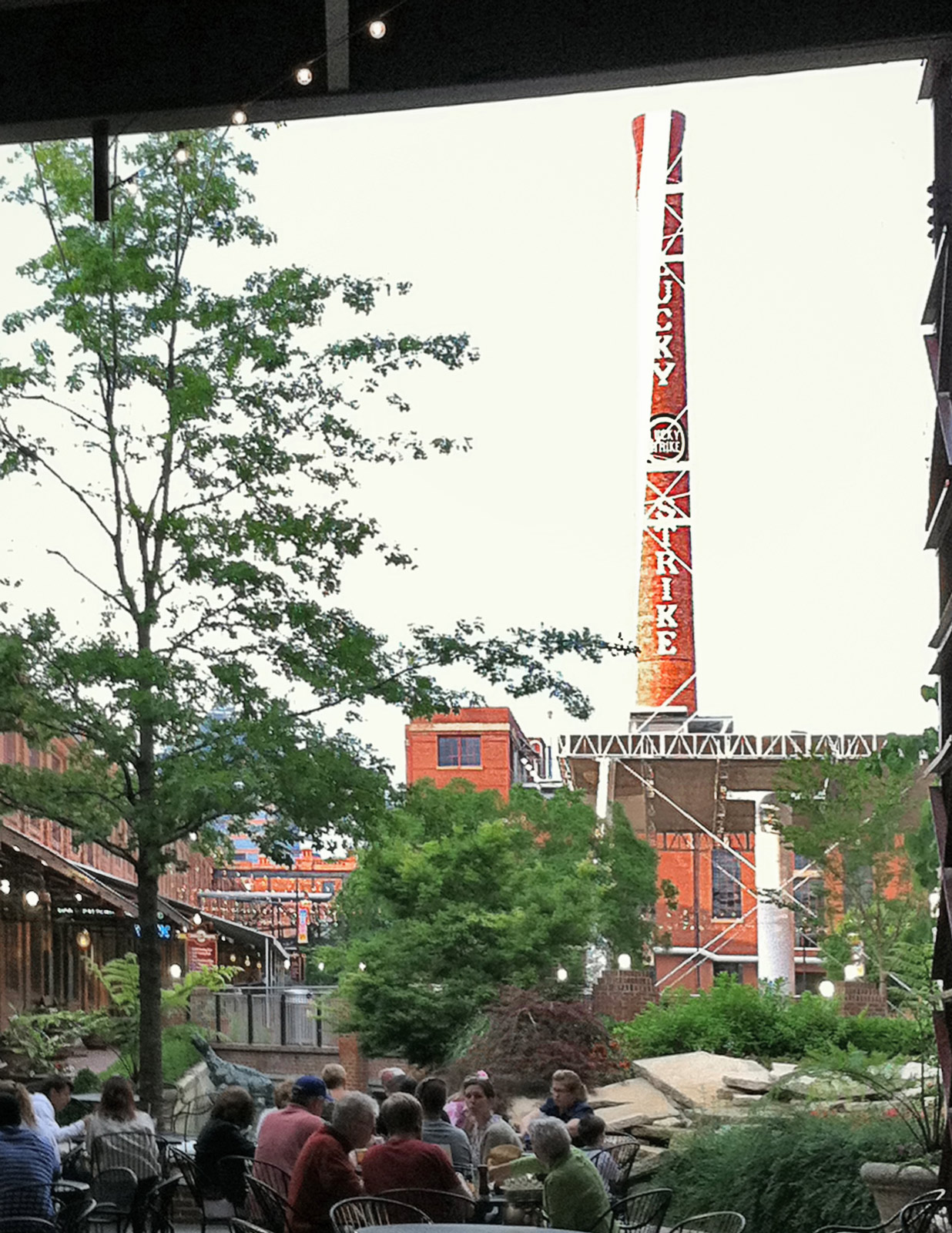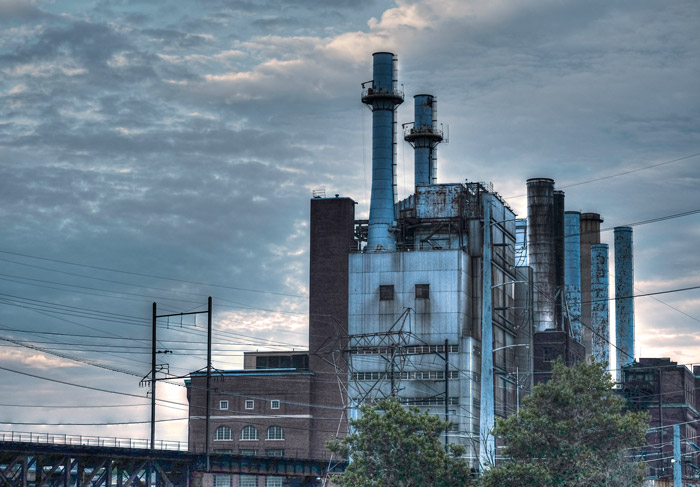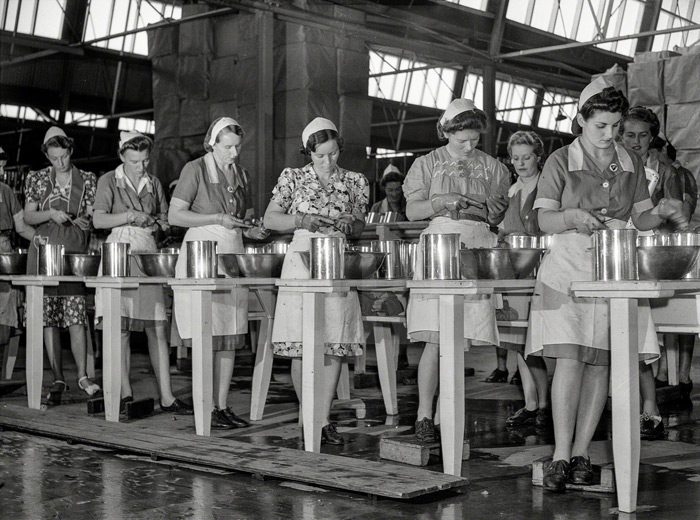Hole in the Clouds
May 16, 2012
 When I lived in North Carolina in the 1970s, downtown Durham was dead, dying, decrepit, and pretty much a mess. They were still making Lucky Strikes in town, but the old tobacco mills were already mostly abandoned, and by 1987 every last one of them was shuttered.
When I lived in North Carolina in the 1970s, downtown Durham was dead, dying, decrepit, and pretty much a mess. They were still making Lucky Strikes in town, but the old tobacco mills were already mostly abandoned, and by 1987 every last one of them was shuttered.
When I visited Durham last week, I don't think I saw a single empty mill. They are all restaurants now, or condos, or shops and galleries and studios and offices. In back of the Lucky Strike chimney is a baseball stadium for the minor-league Durham Bulls. A couple blocks away is a new theater complex, where Wicked was playing.
There are umpteen hundred old mill towns in America that died and stayed dead. And then there are a few that did this sort of thing. As for the cigarettes, I'm told that Lucky Strike is one of the major clients of the 1960s-era ad agency in Mad Men on TV, and that Luckies are still being sold today, filtered and unfiltered both. I don't know where the cigarettes are made, though–maybe Malaysia?
streetscape
restaurant
repurposing
Durham
NC
factory
mill
downtown
chimney
gentrification
Nov 28, 2012
 It does seem like we don't make anything in America any more, but that's not completely true. Right here under this roof in Easton, Pennsylvania, Americans make Crayola crayons and . . . Silly Putty. Not only that, but up the road a few miles they've got a factory outlet store and a Crayola Discovery Center, which is basically a crayon-themed theme park.
It does seem like we don't make anything in America any more, but that's not completely true. Right here under this roof in Easton, Pennsylvania, Americans make Crayola crayons and . . . Silly Putty. Not only that, but up the road a few miles they've got a factory outlet store and a Crayola Discovery Center, which is basically a crayon-themed theme park.
Still and all, this factory doesn't look quite right. You can't make a lot of crayons without heating up a lot of wax–shouldn't they have some serious smokestacks here?
Pennsylvania
birdseye view
work
factory
crayons
Easton
(Image credit: Aerial SkyShots)
Jul 23, 2014
 At this power plant at the edge of the neighborhood, the smokestacks that once belched day and night have been quiet now for a couple of years.
At this power plant at the edge of the neighborhood, the smokestacks that once belched day and night have been quiet now for a couple of years.
Power is still generated here at the Schuylkill complex on Grays Ferry Road, but at a newer facility immediately behind the one pictured above. Veolia Energy bought the newer part of the plant from Philadelphia's municipal electric company and converted its fuel source from oil to natural gas; that single modification reduced greenhouse gas emissions for the city as a whole, it is said, by almost 2 percent, equivalent to taking 60,000 cars off the road.
Veolia makes steam here for center city Philadelphia's centralized heating. And it does release a little smoke, not from these stacks but from a chimney behind them, not visible in the picture.
Schuylkill River
neighborhood
factory
Philly
PECO
(Image credit: Fuji T)
Mar 1, 2016
 In January 1943, Australian truck gardener and food packager Edgell & Sons Ltd opened a new cannery in Cowra, New South Wales, for the war effort; by January 1944, these women and other employees working in shifts around the clock had shipped off one million cans of tomatoes and other vegetables.
In January 1943, Australian truck gardener and food packager Edgell & Sons Ltd opened a new cannery in Cowra, New South Wales, for the war effort; by January 1944, these women and other employees working in shifts around the clock had shipped off one million cans of tomatoes and other vegetables.
The cannery at Cowra stayed in operation till 2013, by which time Edgell had shifted over mostly to frozen foods, and every other cannery in Australia had already closed down. Birdseye now owns the company, though Edgell survives as a brand for the Australian market.
food
work
World War II
Australia
industry
factory
women
New South Wales
Cowra
1943
(Image credit: Office of War Information via Shorpy)
Mar 28, 2016
 This sketch from an 1878 Philadelphia city directory shows the factory and storage yard of Williams Marble & Slate Manufacturing Company. It's the building we live in these days; a long time ago, perhaps in the 1920s, the factory was converted to residential use and divided into twelve apartments. The stable and storage sheds were torn down and the land sold to a rowhouse developer. The industrial presence in our part of town near the Schuylkill River has slipped into an industrial past.
This sketch from an 1878 Philadelphia city directory shows the factory and storage yard of Williams Marble & Slate Manufacturing Company. It's the building we live in these days; a long time ago, perhaps in the 1920s, the factory was converted to residential use and divided into twelve apartments. The stable and storage sheds were torn down and the land sold to a rowhouse developer. The industrial presence in our part of town near the Schuylkill River has slipped into an industrial past.
Williams was once a thriving stone works, specializing in slate mantelpieces and stovetops. In 1876, it exhibited its products at the Centennial Columbian Exhibition, America's first World Fair. The slate and marble were quarried in the mountains of northeast Pennsylvania and floated downs the Schuylkill on barges to Philly's emerging heavy-industry area along the river–basically, the young city's backyard. Wharves and workyards hereabouts handled coal, building stone, and brick-clay from off the barges, and Irish immigrants poured into the neighborhood to work on the docks and in the factories.
All the factories are gone now. The brickyard is a park and community garden.
We live on the second floor, in the corner with the big chimney.
Philadelphia
Schuylkill River
factory
Fitler Square
Williams Marble & Slate
1876
 When I lived in North Carolina in the 1970s, downtown Durham was dead, dying, decrepit, and pretty much a mess. They were still making Lucky Strikes in town, but the old tobacco mills were already mostly abandoned, and by 1987 every last one of them was shuttered.
When I lived in North Carolina in the 1970s, downtown Durham was dead, dying, decrepit, and pretty much a mess. They were still making Lucky Strikes in town, but the old tobacco mills were already mostly abandoned, and by 1987 every last one of them was shuttered. It does seem like we don't make anything in America any more, but that's not completely true. Right here under this roof in Easton, Pennsylvania, Americans make Crayola crayons and . . . Silly Putty. Not only that, but up the road a few miles they've got a factory outlet store and a Crayola Discovery Center, which is basically a crayon-themed theme park.
It does seem like we don't make anything in America any more, but that's not completely true. Right here under this roof in Easton, Pennsylvania, Americans make Crayola crayons and . . . Silly Putty. Not only that, but up the road a few miles they've got a factory outlet store and a Crayola Discovery Center, which is basically a crayon-themed theme park.
 This sketch from an 1878 Philadelphia city directory shows the factory and storage yard of Williams Marble & Slate Manufacturing Company. It's the building we live in these days; a long time ago, perhaps in the 1920s, the factory was converted to residential use and divided into twelve apartments. The stable and storage sheds were torn down and the land sold to a rowhouse developer. The industrial presence in our part of town near the Schuylkill River has slipped into an industrial past.
This sketch from an 1878 Philadelphia city directory shows the factory and storage yard of Williams Marble & Slate Manufacturing Company. It's the building we live in these days; a long time ago, perhaps in the 1920s, the factory was converted to residential use and divided into twelve apartments. The stable and storage sheds were torn down and the land sold to a rowhouse developer. The industrial presence in our part of town near the Schuylkill River has slipped into an industrial past.